


































































MN Forensics team members celebrate their culture by wearing traditional Indian clothing during their tournament






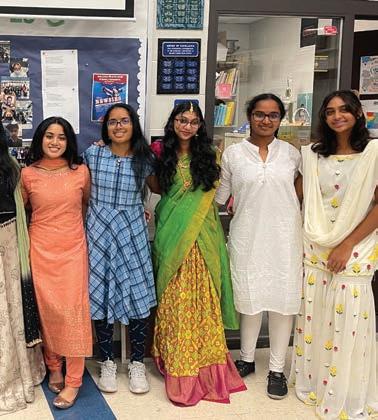























The forensics team shines in traditional Diwali attire at their season-opening tournament
ARGYRENIA PIPINOS Lifestyles Editor
The novice forensics team steps into the Millard North venue for their first competition, feeling a mix of excitement and nerves. As they walk in, wearing their colorful traditional clothing for Diwali, they can’t help but feel emotional.
The bright outfits aren’t just about looks; they represent their culture and all the hard work they have put in to reach this moment.
With each step, they feel the support of their community and the hope for what they can achieve, turning the competition into a proud celebration of who they are.
Diwali, the festival of lights, symbolizes the triumph of good over evil and light over darkness. It is a holiday celebrated in Hinduism, Jainism, and Sikhism.
For the team, wearing traditional attire such as vibrant sarees, elegant kurtas, and intricate lehengas isn’t just a show of cultural identity; it’s a way to bring that light to their first competition.
This decision gives the team a renewed sense of unity and purpose as they prepare to compete, able to develop a shared bond over culture.
Many of the students on the team balance a variety of roles in their school and community, from leading clubs to participating in cultural groups.
Outside of forensics, they celebrate Diwali with their families through activities like lighting diyas, exchanging sweets, and creating rangoli designs to bring color and warmth to their homes. These traditions help them stay connected to their roots and bring meaning to their busy lives.
“Diwali is more than a holiday for me and my family,” said junior Nithya Khandavali. “It’s a time to gather with our families, reflect on the year, and celebrate the joy of being together.”

For these students, Diwali traditions hold deep significance. They look forward to the festival every year, sharing moments family gatherings, cooking traditional meals, and even community events where they perform dances and play songs.
Celebrating their heritage in these ways out-
side of forensics helps them bring that same spirit and confidence to their competitions.
“We want to do something that feels meaningful, not just for ourselves but for our families and the community,” freshman Shyamleen Shinde said.
As the competition nears, the team embraces the challenge of merging their cultural celebration with the high stakes of forensics. They recognize the potential difficulties of balancing Diwali’s festive spirit with the pressure of competition. However, they see this as a chance to enrich their experience.
pride sets a positive tone for the season, show casing how import ant cultural identity is on their journey.

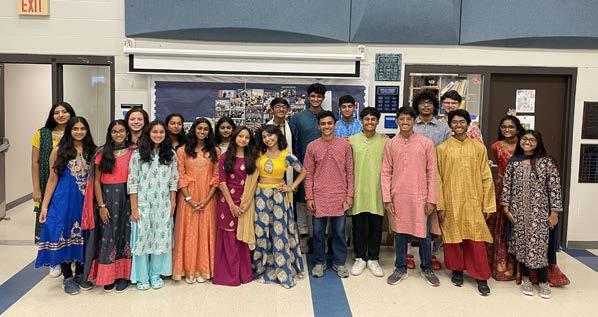
Members of the forensics team pose in their traditional Indian clothes. last school year Every year, both Indian and non-Indian students honor the Hindu culture by dressing up in traditional Indian clothes to school. Photograph contributed by Sabrina Denney Bull
“Sure, there are nerves, but knowing we’re doing something meaningful gives me that extra push. We all wear something that means a lot to us, bringing us closer together,” freshman Ajit Tadiparthi said.
The team’s dedication to their cultural identity infuses their performances with unique energy. The support from their families and team drives them to deliver their best on stage.
“I can see it [dedication] in how they carry themselves,” forensics coach Sabrina Denney Bull said. “They focus on more than just winning or technical execution, [they focus on] being themselves and it’s amazing to see.”
Denney Bull’s observations highlight the team’s skill in merging cultural celebration with competitive spirit. This harmonious blend of tradition and talent leaves a lasting impression on all who attend.
“We want to show that we can celebrate who we are and still compete at a high level,” Tadiparthi said.
With this mindset, the team can handle any challenges lying ahead. They are ready to face the competition head-on on November 1st.
“We’ve got a long season ahead, but we’ll carry this experience with us,” Shinde said. “We’re ready for whatever comes next.”
The team’s readiness to move forward with
“Our cultural identity is not just something we wear; it’s who we are. It connects us to our roots and gives us strength. Every time I put on my traditional outfit, I feel proud to show the world where I come from,” senior Ashritha Chiguluri said. As competition day inches closer, the team navigates between the excitement of Diwali and the concentration required to memorize their speeches for their performances. The team is determined to maintain their momentum throughout the season.
They plan to continue embracing their cultural heritage while striving for competitive success this year. With their first competition behind them, they eagerly anticipate the season ahead, knowing they have started in a way that truly reflects who they are.
For Denney Bull, the season has already begun in a memorable manner. Watching her students want to embrace both their culture and competition inspires her, leading her to believe they will achieve even more.
“Watching them step into that space, fully embrac ing who they are, is incredible. I’m excited to see what else they accomplish this season,” Denney Bull said.

According to the Hindu epic poem Ramayana, Diwali celebrates the return of the poem’s heroes, Rama, his wife Sita, and his brother Lakshmana, to their home of Ayodhya after fourteen years in exile. As the festival of lights, the holiday is marked with pompous celebration, fireworks, and the lighting of millions of diyas (candles). The celebration also is marked by the sharing of sweets and parties!
Diyas (oil lamps) are a defining symbol of the Diwali festival. They are an essential part of Diwali’s significance as a festival celebrating the victory of good over evil. They are also meant to mark the path for the goddess Lakshmi to enter devotees’ houses and bless them.
Rice is used during the Diwali pooja as a symbol of abudance and cleanliness. It is also a part of some of the rituals that form the Diwali pooja.
Most Hindus who celebrate Diwali perform poojas, a method of Hindu worship involving prayer. These poojas involve many essential items, as demonstrated on the pooja thali, or plate used during poojas, below.

Diwali celebrates the Hindu goddess of wealth and prosperity, Lakshmi Mata. Gold coins are often a part of the pooja thali to represent wealth and prosperity and are meant to bring these assets into the year. They can also represent gratitude for financial stability.
Kumkum is a powder used to create the tilak, which is the red mark seen on many Hindus’ foreheads.
Laddoos are a type of mithai (a sweet). Mithai is offered to Hindu deities during the pooja, thus becoming prasad, or ‘blessed food’. Mithai is then distributed to families and friends throughout Diwali, as a community tradition.
Fruits are often offered as prasad and symbolize fertility and prosperity. They also can serve as a symbol of good health and gaining knowledge. The fruits are then considered blessed food.
Breaking a coconut during the pooja is meant to symbolize destroying the ego and overcoming ourselves to achieve a purer, more spiritual state.
Marigolds are considered auspicious because their golden-orange colors are similar to the sky at sunset, associated with the sun god Surya Dev.
Haldi (turmeric) represents auspiciousness and purity.
Agarbatti (incense sticks) are an important part of the pooja as their smoke is meant to purify the prayer room to clear the room of negative energy.
MN Business Academy students prepare for the future as they search for internships and life after high school
KAI PAVLOVA Staff Writer
usiness is more than just numbers. It is built on ambition, innovation, and success. It’s a world of awaiting opportunities.
For many students, majoring in business can open up many possibilities: including, but not limited to, human resources, accounting, sales, and more. The Millard Business and Entrepreneurship Academy and Business and Logistics Academy offer an inside look into business while students are still in high school.
Millard Coordinator of Secondary Programs Melanie Olson makes these academies possible.
“The academy offers students unique courses specific to that academy focus, the opportunity to earn dual credit for college courses, and many opportunities to make industry connections,” Olson said.
Students can choose to be in the Business and Logistics Management Academy or the Business and Entrepreneurship Academy. Both business academies offer distinct sides of business: anything and everything from marketing to business law.
Taking a deeper look at the Business and Entrepreneurship Academy, some of the courses offered include College Accounting, Introduction to Entrepreneurship and Business, and AP Micro and Macroeconomics.
Seniors Patrick Kuyper, Jennifer Nguyen, and Alexander Michaud are all part of the Business and Entrepreneurship Academy.
Similarly, these students have all learned new and essential skills in this two-year academy. Kuyper experienced career redirection, Nguyen built her own busi-
ness, and Michaud learned the importance of making connections.
“The academy has taught me the fundamentals of marketing, management, and finance. However, the most important lesson has been my career redirection,” Kuyper said. “At the beginning of the program, I was certain I wanted to do marketing. However, I am now interested in finance and computer science,”
As part of the academies, students are required to find and partake in an internship during their time in the program. The academy seniors are actively exploring the best opportunities to align with their career goals.
“They complete 120 hours each semester outside of school. I have had students in all types of businesses all around Omaha,” Lead Business and Logistics instructor Mike Rogers said.
In the spring of their junior year, students start by creating resumes and a LinkedIn profile and are encouraged to start thinking about what career field they want to pursue.
If needed, the academies help students with business contacts, but students are ultimately responsible for finding their internship.
Michaud balances playing a fall and spring sport, school, and academy schedules. He owns a detailing business and is also reaching out to more people to find more opportunities specific to the academy courses, possibly in real estate.
“It’s a great opportunity where you can find something that really interests you and get paid to do it,” Michaud said.
Through the academies, students can graduate from high school with a business associate’s degree. Additionally, the academy students share that being around like-minded peers who hold the same passions as you can be very impactful.
“Being able to be around a group of driven, kind, and fun people has had a huge reason on the impact of a program like this,” Kuyper said.
Building connections is a fundamental aspect of any job, but it especially applies to the business world.
“Through connections, you’re able to get jobs, you’re able to have friends, and you’re able to find people that you can just reach out to when you need help,” Nguyen said.
Now that they’ve had this experience, this group of students feel well-prepared for the future.
“The academy provides students with real-world experiences related to that career so they can make an informed decision about pursuing that career after high school,” Olson said.
The skills they’ve learned will stick with them in every aspect of life in the future, not just business.
“This academy helps teach students how to understand and utilize an eclectic arsenal of business skills. These skills are universal in their application and can be applied to any respected study or career,” Kuyper said.
As the business world grows and changes, both Business Academy’s students can put themselves out there like never before. With clearer visions of their future, newfound support, and self-confidence, these squads are set to change the world.
Supply Chain Manager
• Craft and evaluate operative and distributive business plans
• Salary- $115,000
The Millard Academies provide a variety of career exploration opportunities for their students. Delving into the The Millard Business and Logistics Academy, these are some of the possible careers students can pursue that relate to the fields of Business and Logistics; these careers are covered in academy classes.
Source: U.S. Bureau of Labor Statistics, Indeed
Logistician
• Oversees the production process of a business or organization by assessing and optimizing the supply chain
• Salary- &79,400
Storage and Distribution Managers
• Organize and supervise the supply, storage, and distribution of a company’s goods or products
• Salary- $11,870

New administrator Nate Wragge shares his goals for Millard North, gives insight into what his job entails as the new 10th grade assistant principal
MAHDIS RIAZIKHAH
Co-Opinions Editor
As Nate Wragge walked into 1010 S 144th St for his first day of work, his heartbeat quickened and a cascade of goosebumps prickled along his arms. His back straightened. He was met with an eerie silence; there were no students yet. The staff greeted him with warm, friendly smiles. Immediately, Wragge felt right at home. He knew he had made the perfect decision by joining the Millard North family.
Moving to Omaha from Columbus, Nebraska, Wragge jump-started his teaching career by student-teaching at Millard South High School. There he became a math teacher, working in the classroom for 15 years and also coaching bowling and boys’ soccer.
“You go into education wanting to help students, to help them achieve their goals,” Wragge said. “I did summer school principal in 2021 and I wanted something more than I was doing. I wanted to help more kids, and I enjoyed it so [much] that it led me to this [assistant principal] role.”
Wragge is the 10th-grade assistant principal who oversees the Math and World Language departments. He is also in charge of staff development.
“That’s the beauty of this role [assistant principal], you never know,” Wragge said. “Every day is different, which I like. It makes the job interesting and you feel you’re helping.”
Being an assistant principal comes with its challenges though. The position can be unpredictable and
Meet Mr. Wragge
Mr. Wragge has made the effort to get to know us as students. Now’s our turn to get to know him! See if you can find similar interests and hobbies through this Q&A.
Photograph by Kai Pavolva
Q
What is your favorite band? I listen to all kinds of music so I don’t necessarily have a favorite band... Right now I am listening to Zach Bryan, Creedence Clearwater Revival, and Eminem.
tasks pile up quickly as many people at school depend on you.
“I don’t have something I don’t like because the people I work with are great. So if there is something not so fun, I’ve got great people to do it with me,” Wragge said.
Wragge shares that his primary goal is to make everyone in the building feel safe. Supporting students and staff as much as possible is his second, but equally important, goal.
“If kids and staff don’t feel safe, it’s hard to learn. It affects the learning environment negatively if you don’t have a safe environment,” Wragge said.
Wragge and his wife are high school sweethearts. Both attended the University of Nebraska-Omaha and started a family of two daughters and a son together. The Wragge family enjoys hiking, biking, spending time outdoors, and supporting MN activities.
“I love to go to Millard North sporting events, and choir and orchestra [performances]. I love seeing what students do outside the classroom,” Wragge said.
Assistant Principal Matthew Starks works closely with Wragge. They both understand the challenges of transitioning to a leadership role.
“As an admin team, we can lean on each other because we all have different strengths and experiences,” Starks said.
Starks occasionally gives suggestions to Wragge. According to Starks, Wragge understands the importance of being visible, responsive, and empathetic as a building administrator.
“Taking on a leadership role in a new building can be difficult, but he [Wragge] has done an amazing job of transitioning,” Starks said.
Starks appreciates the time that Wragge takes to make connections with students and staff. He recognizes Wragge’s quick and efficient response to students’ needs and appreciates how he treats every student with empathy, respect, and care, no matter the situation.
“I deeply respect his [Wragge’s] work ethic and look forward to his contributions to our building for years to come,” Starks said.
Wragge makes sure to be present in the classroom by conducting lots of walk-throughs and giving valuable and tailored feedback to help the World Language and Math teachers grow.
“I enjoy having Mr. Wragge as the World Language supervisor… His door is always open in case you need help solving a behavior issue or finding strategies to improve student learning,” World Language Department Head Shaun Hoover said.
Wragge takes the time to chat with teachers during passing periods and asks if there is anything he can do to support both instructors and students.
“Whether you are a new teacher or a veteran teacher, he [Wragge] lets his presence be known,” Hoover said. “He compliments us [the World Language teachers] on the learning he saw going on.”
Wragge has left a remarkable impression on everyone who’s interacted with him. His evident dedication to Millard North undoubtedly marks the beginning of an exciting and memorable era for our school.
A

Q What is your favorite sports team? The Huskers A
Q What are you most excited about at MN this year?
...Being a relationship guy, I am very excited to get to know our students and staff and be a part of an excellent school that leads the state.
A
The Mustang Booster Club’s Mustang Moolah program makes its return at Millard North on October 8th, helps fundraise for sports and activities
ENZO CIRCO Staff Writer
As the stage lights beam on, the MN show choir group proceeds out onto the stage. As the group swings to the beat of the music, the show choir is supported by Mustang Moolah.
The Mustang Moolah program is returning this year after a hiatus since 2022. Led by the Mustang Booster Club, clubs and activities that sell the program’s raffle tickets are guaranteed 67% of the sales from raffle tickets sold.
This year, there are 28 clubs and activities that sell tickets. They are able to use their profits individually or for the group as a whole.
Fifty-eight prizes will be handed out by a spun wheel. As the Nebraska Licencing Law states, all of the raffle tickets must be drawn at the same time. This was determined after the tickets were printed, so the information on the tickets is incorrect. Instead of being drawn in increments, all raffle tickets are due on Dec. 7. Tickets will be drawn on Dec. 10 at a Varsity Boys Basketball game.
Mustang Moolah took off last year as the Booster Club got new executives, as well as a new head principal.
“This year is fall into winter activities, next year will be winter into spring activities. This will repeat. We had a new Mustang Booster Club Executive Board last year almost entirely, as well as a new head principal. We wanted to allow everyone the opportunity to get settled and set goals along with objectives,” Mustang Booster Club Fundraising Chair Kelsey Cunningham said.
The Booster Club is highlighting this period of transition to the new Executive Board as it follows a year of significant changes from last year. Because of the new changes, the Booster Club is
Fill out the buyer’s first and last name and the rest of their contact information
Tear off the bottom part of the ticket.
Make sure the buyer keep it handy, as this part specifies what each prize entails

taking a long-term approach by setting new and realistic ideas and goals.
Show choir, like many clubs, aims to maximize its ticket sales by selling a large number of tickets to friends, family, and students alike. This has allowed them to utilize the Mustang Moolah income for the show choir groups and be able to reinvest it into the program.
Show choir has always been deeply involved in Mustang Moolah. Even before it became Mustang Moolah, the program held the spot of top ticket seller in the school.
“We have always been deeply involved in the Booster Club… We have had many show choir parents on the Booster Board and they have helped us in many ways to support the show choir program. That said, when Moolah was introduced, I immediately jumped on board. It’s an easy fundraiser with a great payout to the activities that sell,” show choir director Megan Swain said.
Parents’ involvement in the Mustang Moolah program also helps further academic and athletic support.
“We have so many expenses in which the Moolah profits benefit. For instance, we updated all of our lighting a few years ago thanks to Mustang Moolah,” Swain said.
The Mustang Booster Club used to hold a fundraiser, the “Gala”. A large party hosted at a country club, the traditional Gala would include a silent auction and dancing , among other activities. It was a significant and popular contributor to the organization.
Alongside the show choir program, the girls soccer program is another actitvity selling tickets. Sophomore Elaina Dethloff shares her personal goals and the incentives soccer coach James Abueg has set for the girls soccer team.
Keep the top part of the ticket to return to your activity/ athletic advisor. This way, your hard work will go to your organization
“Coach Abueg is bribing us with merch. I also want to raise money for soccer [personally]. If we sell 10 tickets we get shirts, if we sell 20 we get shorts, 30 tickets is a hoodie, and 40 is a jacket,” Dethloff said.
This fun twist turns ticket selling into a challenge, building excitement as students and athletes work their way toward earning the incentives. However, for Dethloff it’s not just about the rewards, but also about supporting girls soccer and earning profits for the group alongside the other players selling tickets.
Mustang Moolah has assisted in fundraising for various clubs and activities throughout. With the strong enthusiasm and participation of these parents, students, and teachers, Mustang Moolah thrives on, paving the way to success for many school activities.
Car crash on Dodge leaves three injured (Oct. 29)
Nebraska village residents advised to evacuate due to wildfires (Oct. 29)
Supreme Court allows Virginia to implement a program meant to bar suspected noncitizens from voter registration rolls (Oct. 30)
Texas Tech football player endorses Trump, stirring debate over politics’ place in sports (Oct. 26)
Israel strikes Lebanese city of Baalbek after cautioning residents to flee (Oct. 30)
Collapsed hotel in Argentina leaves one dead and at least nine trapped under rubble (Oct. 29)
As politics become polarized, our political relationships follow suit but we can all come to an understanding
THE HOOFBEAT Staff
Editorial
The Founding Fathers warned against a two-party system. Our country didn’t listen, and here we are today—a country with a two-party system that is more divided than ever.
The Founding Fathers had seen that film before. England, the country they had broken away from, and their two-party system looming in the peripheral. John Adams, the United States’ Founding Father, and second President, expressed his distaste for two political parties.
“A division of the republic into two great parties… is to be dreaded as the great political evil,” Adams said.
Adam’s observation is an unfortunate foreshadowing of what we are experiencing today as our two political parties become divergent and disconnected from one another.
In Pew Research Center’s infographic, Political Polarization in the American Public, it shows between 1994 and 2014 the number of Republicans and Democrats in the middle have decreased over the years and have moved closer to their respective sides.
The decline in the cohesiveness of the American people, known as Political Polarization, has increased over the years due to a two-party system, biased news media, and inflamed social media intolerance.
In a TED talk by Andrew Yang Why US Politics is Broken– and How to Fix It, he identifies that usually 10-12% of voters participate in the primary process and those voters tend to be the extremists or the zealots of their parties. Following the trend of people being on opposite
Student
Speak


ends of the political scale. Those zealots vote for people to represent them, and news media that affiliates with that party amplifies the party’s message. Social media then ignites the flame by housing misrepresentations of truths and facts, which leads to citizens becoming less informed and more biased.
In the New York Times/Siena College Poll, nearly half of Americans can attest that a person’s political affiliation reveals something about whether he or she is a good person.
According to the Pew Research Center, 53% of Republicans and 43% of Democrats say members of the other party are dishonest, immoral, lazy, unintelligent, and closed-minded.
People aren’t inherently good or bad, but when talking about varying opinions on political issues, most people forget they are talking with an actual person.
So what can be done about the increasing polarization? Politicians can appeal to the people more in the middle by changing from the two-party primary electoral process to enacting a Forced Ranking process in one general election to combat polarization.
Alaska changed to a ranked-choice process and has been the only state to do so, which skips over the primary election and goes straight into the general election. The primary process elects candidates for the general election instead of a forced ranking process where you rank your candidate choices. If your first candidate doesn’t have the number of votes necessary to win, your vote will count for the second candidate chosen. The candidate with the highest number of combined votes wins.
What qualities do you look for in a president?
Josie deNourie Senior “ “
I think honesty is a good quality and someone who has the best interest of the country at heart.
Kyra Fulkerson Senior “ “
Someone who is looking out for the people, who values others’ opinions, and doesn’t do what they want.


Jack McWilliams
Cameron Miller Senior “ “ Honesty, passion for our country, and someone who is truly looking out for the people.
I’m looking for someone who values the safety of our country or the economy.
This system forces candidates to appeal more in the middle to get more votes overall than just from their political party extremists.
An undeniable way to find common ground is by consuming media from nonpartisan sources and ensuring that you are considering all sides of an issue before deciding your opinion. In a study enacted by the Pew Research Center, 57% of those who identify social media as their main source of political information have lower political knowledge. Instead, to prevent this, question if a source or post from social media or news organization is true before sharing and believing it to be true and letting it influence your political opinion.
The election is tomorrow. Regardless of who wins and who you’re anticipating in office come inauguration day, the most important thing people can do is find a common ground that benefits everyone, attempt to understand differing opinions on issues, and work toward common ground.
Lastly, the founding fathers also knew that the three branches of government gave us checks and balances in that each branch could change the acts of other branches so that the President wouldn’t consolidate too much power.
There are many elections yet to come, and in the passing time of four years until the next arrives, strive to be better and understand each other’s differences because this is the electoral process, and a president will be elected to represent all Americans, no matter what your political differences are. It’s crucial for everyone to come together in unity, fostering understanding and respect along the way.

By Brady Bredenkamp

On every legal and public document, my address is written as 15567 Hickory St. This is my house. My place of residence. But what sets this building apart from the next? What makes this place more than just a shelter?
On October 14, 2006, my newborn wails were first heard in the Bergan Mercy Hospital in Omaha, Nebraska. Although my heart beat for the first time in the United States, my heart belongs farther south. 3,873 miles to be exact. My soul is instinctively bound to the mega-city of Lima, Perú, where the music booms louder, the seafood is fresher, and the tide feels cooler.
Just days after getting married a block from their childhood homes, my parents booked the first flight they could, en route to the promising “land of opportunity”: the United States of America, in 2001.
Once my sister and I were born, they formed a mutual commitment to keep us connected to our roots. Accordingly, we visited our family in Lima every Christmas or during the summer if my dad’s work schedule allowed it.
Frolicking in the cul de sac of my grandma’s house, my cousins and I would play from morning to night, riding our too-small, beat-down bikes around the neighborhood and playing soccer using the benches in the

22% of people say where they live is home.
source: pewresearch.org
circle as goalposts. Once the sun descended into dusk, we’d scurry inside to devour a warm, home-cooked meal of “tallarines verdes,”, prepared lovingly by my grandma, and scamper back outside to play until bedtime.
I had, and still do, the time of my life on those trips. There’s just something about the air back there, a feeling of belonging I can rarely place back home. Whether it’s the climate, the food, the buzz, or the people, even the strangers on the street, what I feel there is something inexplicable.
To some, the humid weather, never-ending noise, bright lights, and loud chatter of Lima can be aggravating. But to me it’s perfect. It’s life perfectly embodied in the form of a city.
So does “home” just entail where you hang your coat up at the end of the day? Or is it where you feel at your most comfortable, natural state? Is it the people you feel the safest around? Is it the environment you taste, smell, and hear when you’re drifting off to sleep? Is it a mixture of the three? I think so.
If you were to ask me, the familiar sensation of home boils down to just that. The connotation of “home” represents something deeper than simply where you direct your mail. Even in the biological sense, we–humans, as animals–require a sanctuary like this, whether it’s in the form of a cave, nest, or burrow.
This conclusion was only fortified when I took AP Psychology last year. American psychologist Abraham Maslow researched human nature and what we as a specimen require to survive. He developed “Maslow’s Hierarchy of Needs”, a humanistic theory of personality that lists human needs in order of importance, with shelter listed as one of human’s core necessities alongside food, water, clothing, and oxygen. For a person to

26% of people say where they were born is home.

4% of people say where they went to high school is home.
reach their highest potential, or experience “self-actualization”, they must first fulfill their basic essentials. Everyone, no matter your background or experiences, innately requires a hollow of comfort and security. It’s part of our biological structure, no matter where you’re from.
With this, it’s important to point out that it’s not like I don’t love or appreciate my life in Nebraska, but it’s just that I feel more “at home” in my country of origin. My primary tier of needs is satiated here. After all, I was born here and I’ve met my best friends living and going to school here. Omaha is an amazing city, and I wouldn’t trade my life here for the world. A part of my heart is anchored here as well, with my home and my favorite coffee shops and parks. Some of my best memories were made in the States.
This is a point of view that other children of immigrants share, no matter where in the world their family calls home.
I often have conversations with my friends about how much we miss our countries. It’s nice to know that I’m not the only one who feels homesick sometimes. I’ve gotten so used to visiting every Christmas that I don’t remember the last time I was in Omaha for the holidays. I don’t even know what I would do if I was here. Although I might soon.
This year, my family might not visit for Christmas because holiday season plane ticket prices have inflated greatly. Check in on me later in the year, guys.
Anyway, as the old saying goes, “home is where the heart is. ”Although I work, study, and reside in West Omaha, I feel the soundest surrounded by my culture, family, and best friends. No other tangible item or location could replace the sensation of home.

18% of people say where they were raised is home.

15% of people say where their family is from is home.

2024 elections mark historic moment, acccentuated by first-time voters and widespread signage
Lower chamber of Congress, responsible for making and passing laws. Consists of 435 members, each differing in each state in terms of population size (Each member represents a certain district within a state).
Unicameral: Only one house votes on issues (ex. Nebraska just has a senate).
Bicameral: Two houses vote on issues
Senate
Upper chamber of Congress, responsible for voting on a variety of facets, like amendments, treaties, and bills. Consists of 100 members, with two being allotted to each state.
An area of a state that elects a representative for the House of Representatives (total of 435 congressional districts nationwide).
MIRA
MUKHERJEE
In-Depth Editor jority.
Red and blue hues speckle across a sea of green, accentuating a microcosm of national politics. These ubiquitous yet understated markers have spanned many front lawns during the current election season. Whether a singular azure blue circle or a ruby red Packman figure, these signs symbolize a pertinent element of the Nebraska political structure: the potential of a split vote.
So what exactly is a split vote, and what is its significance in the 2024 elections? A split vote pertains to the allocation of electoral votes, in which most states have a “winner takes all” method, where the overall winning candidate receives all the state’s electoral votes. But two states, Maine and Nebraska, allow for discrepancies, letting each congressional district put forth an electoral vote for their popular vote winner, emphasizing the impact of voters.
“Every vote counts, and that’s what I try to emphasize in my class,” history teacher Douglas Drummond said.
Teaching World History, American Government, and AP Government and Politics, Drummond has stressed the importance of individual votes, especially due to the unique location in which Omaha is situated.
“We happen to live in a district that emphasizes how important an individual vote is because we can split away,” Drummond said.
The initiation of a split vote within Nebraska was enacted in 1991, and according to “Associated Press News,” was instituted to draw presidential candidates’ attention to the state. Although having not voted for a Democratic candidate since 1964, Nebraska’s second congressional district has won an electoral vote for the Democratic candidate in both the 2008 and 2020 elections
“It can make the difference between winning and losing, but in this election, it’s not likely going to. A lot of things have to fall perfectly in place, but it is the tie-breaking vote,” Drummond said.
While having a relatively small impact historically, these “blue dots” still promote the distinctiveness of Nebraska’s electoral process.
“As for the blue dot signs popping up around town, they have been helpful in educating people on how our electoral system works,” Senior Lexi Combs said.
Combs is an intern at Women Who Run and co-founded the youth cohort NE Voices, both designed to encourage engagement within the local political scene.
“I strongly believe in maintaining the way that Nebraska splits its electoral votes, it better represents the population of our state and allows all voices to be heard,” senior Lexi Combs said.
Signage, such as the blue and red dots, symbolize the multifaceted opinions of the general public.
Not only instilling a way to represent respective candidates, these simple signs encourage action within the community.
“I think these signs will encourage future generations to become more politically active. When I see the blue and red dots, it reminds me to be more involved in our local politics,” Zheng said.
Engaging in local politics can make a significant difference on the trajectory of statewide elections, especially when individuals take action.
“I believe it’s more important to be canvassing, writing postcards, and having conversations, especially about down ballot candidates and ballot initiatives, which are even more important than the national elections,” Combs said.
Besides the federal offices (president, vice president, senators, representatives), all voters are able to partake in the selection of Nebraska’s State Board of Education (four out of the eight positions).
The “Nebraska Department of Education” states that the State Board of Education “shall be the policy-forming, planning, and evaluative body for the state school program.”
School curriculums, teacher shortages, and community engagement are all topics of discussion for the board, influencing the educational journeys of many students.

Nebraska is composed of three congressional districts--Douglas, Saunders, and partly Sarpy county represent district two. In prior elections, district two has oscillated between a Republican and Democratic ma-
“The first time that I saw the signs, I was confused at what they were meant for. Now that I know what they mean, I think they are a unique way for people to show support for a political party,” junior Angela Zheng said.
Whether a blue or red dot, the symbol represents a common message: be engaged in Nebraska’s politics. From school board representatives to the president of the United States, every vote aids in the strengthening of representative democracy, where every voice can and should be heard.
AlookatdefiningmomentsinNebraska’shistoricaltrajectory
1937Nebraska’slegislature,withthe helpofSenatorGeorgeNorris,ischangedfromabicameraltounicamerallegislature,consisting of49senators.

1878AlbinusNanceiselectedgovernor attheageof30,makinghimthe youngestevergovernorofNebraska.

1920The19thAmendmentis passed,allowingwomen’ssuffrage.Thiswould promptwomentorunforpositionswithinthe Nebraskalegislature.
1901CharlesH.Dietrichservesasgovernorforfourmonths.InNebraska,he remainstheshortest-servingterm governor.
1986Thetwomainnomineesforgovernorarefemale,KayOrrandHelen Boosalis,markingthefirstfemale governorofNebraska(Orr).
1913The17thAmendmentisofficiallyformalized.Directelectionofsenatorsviavotersofrespectivestatesnowcommence.
1924ClaraA.Humphrey,Sara T.Muir,andMabelA.Gillespiearethefirstwomentoholdpositions intheNebraskalegislature;allthreeareelectedasrepresentatives.
ANUJ SINGH
Front Page Editor
igh schoolers often dream of the day when they hit the big one-eight, breathlessly anticipating their adulthood. Alongside exciting new opportunities like being legally able to gamble their savings away, this transformative point in their lives is also marked by a new feeling of independence.
It aligns with many checkpoints in their life’s journey, such as officially getting a driver’s license, no longer needing parental consent for many things, and, of course, gaining the fundamentally American right to vote.
Voting is a hallmark of our democracy, representing the voices of the people across our nation. And as this year’s elections loom closer and closer, many MN students are preparing to invoke this essential right.
“I decided to vote [during this election cycle] so that my values and beliefs can be represented by my country’s government,” senior Lucy Cho said.
who to vote for can be difficult. However, as Drummond suggests, digitalization and the plethora of resources available on social media have made educating themselves extremely accessible for young adults.
Senior Sanvi Gudaru has taken this approach to help her come to her decision on who to cast her vote for. Through extensive research on the candidates and their policies, including on social media, she has been able to make a choice she feels comfortable supporting.
“Watching the debates to consider how [the candidates] align with the issues that matter most to me, I was able to come closer to a consensus on my candidate choice. I also have been able to research through Instagram and through news articles, which has also been helpful in deciding who to vote for,” Gudaru said.
However, while these students are eagerly awaiting their opportunity to cast their votes, they are also aware that they can not change the course of the upcoming election alone.
High school is an indispensible time and place to reach and teach a vast majority of young people, and an ideal setting to encourage and facilitate voter registration.
“ “
Many of these firsttime voters, including Cho, felt the need to cast their vote due to the current polarized state of politics in our nation, which made them believe that it was necessary to make their voices heard.
“People have the tendency to be biased to their peers in their own political party, and listen to news sources that are biased towards their beliefs,” Cho said. “The current state of our country made me more excited to vote and to encourage other first-time voters to vote. It’s important to show up to the booths as critical issues are on the ballot this year.”
Government teacher Douglas Drummond further emphasized the importance of young voters, describing how voters ages 18-34 have the potential to hold essential power as a voting bloc in the upcoming election.
“Gen Z youth alone make up over 40 million voters, or about one-fifth of the American electorate. They have led major movements for action on issues like gun violence, climate, and racial justice,” Drummond said. “[Young adults] have voted at historic rates compared to youth in previous decades, and their choices on the ballot have influenced key elections, including the upcoming one.”
As first-time voters, the process of deciding


“I think everyone has the re sponsibility to vote because it’s one of the most direct ways to influence the future. “It’s not just a personal decision because these policies affect everyone,” Gudaru said. “If someone is choosing not to vote, I’d tell them to reconsider it because voting is one of the most impactful ways to create change in our country.”
Specifically, as Drummond describes, young people should be the most active group in America’s elector ate, something that the school system should emphasize through curriculum focuses.

“Just as young people must be taught to drive, learn the rules of the road, and practice before they get behind the wheel, we need to help prepare youth to vote long before their first Election Day. High school is an indispensable time and place to reach and teach a vast majority of young people, and an ideal setting to encourage and facilitate voter registration,” Drummond said.
Looking ahead to the upcoming election, these young voters will undergo a fundamental American pro cess for the first time. Ultimately, for them, the impor tance of voting comes down to one thing: representa tion.
“It is necessary for our government to hear our voic es and opinions as young people. I’m most looking for ward to having the amazing opportunity to have a voice in my community and my representatives by voting for the candidates that I believe support my values,” Cho said.
No matter what happens on November 5th, these voters will be satisfied knowing that they did everything in their power to make their voices count.


Sports fans are passionate, yet pop music fans are annoying; what’s this double standard?

RHEA JAIN Staff Writer
ou went to the Eras tour at Arrowhead? You’re not like one of those crazy swifties?”
I remember hearing these words come out of people’s mouths after I told them about my summer break. It wasn’t shocking though-Swifties are everywhere, and the hype is hard to ignore.
No matter how often you turn on the TV, one topic is always trending— Taylor Swift. Yet it’s not always about her, but oddly enough, her fans. Swifties this, Swifties that, Swifties everything.
Yet, as a “Swiftie,” I didn’t understand all the controversy surrounding us. We did just what all fans do: we cheered, celebrated, and loudly sang music until our voices were gone.
-According to some, that was the exact prob lem.

We are seen as too much. We are labeled obsessive and annoying because we express excitement in extravagant ways. “Don’t scream, cheer, or yell,” people say. “She’s just a singer!’”
deemed loyalty.
But, if Taylor Swift fans do the same, it’s considered childish and obnoxious.
Am I not a supporter of my favorite musician? Do I exaggerate my feelings about Taylor Swift? Is the way I’m expressing my emotions wrong? Or is it just related to the differences between musicians and athletes?
I am a diehard fan of Taylor Swift, just like any sports fan is about their team. However, a barrier was built between us fans. This is not a singular occasion.
Fans of celebrities ranging from Harry Styles to Kim Kardashian have all experienced the hatred spewed by others. Whether the division is caused by boy-band origins/splits or billion-dollar companies, many other groups of people have used their platforms to spread hate and resentment.
This shows that some fan bases can ruin other fandoms just because they dislike the attention that others are getting.
The constant chatter about Taylor Swift throughout the media has caused problems, especially her appearances at the Chiefs football games.
A football fan could wear sports merch, like jerseys, to any event, but it’s seen as overzealous if a Swiftie wears celebrity merch.
A football fan could dedicate an entire room to sports posters and their team’s colors, but it’s distasteful if a Swiftie does the same for their favorite musician.
A football fan could spend hundreds of dollars to go to each game, but it’s seen as excessive if a Swiftie pays the same amount for a concert ticket.

That simply wasn’t true. Taylor Swift isn’t just a singer, she’s a beloved musician with power, influence, and over 300 music awards.
However, many people still don’t understand why others idolize her. Swifties love Taylor Swift for the same reasons football fans adore athletes, like Travis Kelce or Patrick Mahomes, for their motivation and determination to make their respective fields better and more enjoyable.
Yet as I watched video after video about the Chiefs and their ‘esteemed recognitions’, I couldn’t help but think, “Aren’t Chiefs football fans the same as Swifties? Aren’t they also expressing happiness for the fame and awards their teams are receiving?”
Apparently, they aren’t. They’re seen as “passionate and supportive” of their favorite team. Football fans can chant and yell for their favorite players, and it’s

The double standard is evident. Our voices and opinions are diminished, yet others are upholstered and cherished.
Through the use of social media, it feels as though the hate comments never stop. Why can’t our excitement be seen the same? It was like the world couldn’t grasp our passion. But I remember leaving Arrowhead stadium that summer night in July, watching the fireworks explode and confetti shower down on us. At that moment, I knew I was part of more than a music concert. I was part of a celebration similar to the ones after the Chiefs win the Superbowl. Seeing those smiling faces proved that the rest of the world was black and white, but we. the Swifties, were in screaming color.
The Hoofbeat staff will publish six issues of the paper at Millard North High School (1010 South 144th Street, Omaha, NE). Type is set with the use of Macintosh and HP computers. Printing is done by White Wolf Printing, Sheldon IA. The Hoofbeat is a member of the Nebraska High School Press Association and JEA. The Hoofbeat exists for the express purpose of student information and learning.
Advertising: Advertising will be sold at $7 per column inch or by special quarter, half, or full page rates. Information can be obtained by calling 402715-1404.
Responding to the Hoofbeat: Letters to the editor may be submitted to Room 1105 or sent to sacrotzer@mpsomaha.org. Names will be published. Letters must not contain attacks against an individual and may be edited for clarity.
Mia Castro
Front Page Editor
Anuj Singh
News Editor
Mia Castro
Opinions Editor
Mahdis Riazikhah
Teja Sridher
In-Depth Editor
Mira Mukherjee
Lifestyle Editor
Renia Pipinos
Sports Editor
Matthew Um
Online Editor
Sarah Robey
Adviser
Sarah Crotzer
Principal
Aaron Bearinger
Follow us...

Cartoonists
Brady Bredenkamp
Nadirah Johnson
Artists
Brady Bredenkamp
Nadirah Johnson
Photographer
Kai Pavlova
Staff Writers
Enzo Circo
Grace Evert
Lydia Harlow
Rhea Jain
Katelyn Judd
Sumanas Reddy
Kai Pavlova


Disney has been integrating societal stereotypes into each of its films for decades

s the Disney theme fills the room with joy, you sit there, enthralled by the magic happening behind the screen. At that moment, life seems far too innocent as a kid. However, beneath the surface of these films that have captivated young audiences for decades are the underlying ideas slowly altering a child’s perspective on society.
Although these movies have been one of the peaks of our childhood, ideas like female submission, male dominance, and racial stereotypes remain prevalent throughout them.
These ideas end up changing the schemas of kids at a young age, causing some to believe that princesses are only of certain races or that women always need someone to save them in the end.
Personally, I noticed these ideas in the Disney movies I watched as a kid, which led me and many others to wonder if women really need saving, as depicted by almost all of Disney’s content.
My favorite Disney movie, Tangled, had the entire plot centered around Rapunzel getting saved by her prince, Flynn Rider. She then went to live happily ever after with him, implying that if she wasn’t saved by
Rider, she would have been stuck in the tragic life she had before.
Aside from this, many of the songs in Disney movies represent stereotypical norms that are being ingrained into young children.
Songs like “I’ll Make a Man Out of You” or “Someday My Prince Will Come” just seem to be Disney classics, however these beloved songs represent the concept of male superiority to an even greater extent.
Additionally, as a child, I would specifically notice how Disney ultimately set unrealistic expectations for what the word “pretty” defined, ingraining into my mind that that’s what I should strive to be.
Disney’s lack of representation of different body types and ethnicities leaves some kids on the sidelines questioning their true beauty.
Aside from just affecting young girls, Disney’s underlying motifs have also been seen to suppress the emotions of young boys as well.
According to Concordia University, “Disney movies portray the image that men do not show their emotions. This sends a message to young boys that men are supposed to express their emotions physically or violently instead of emotionally.”
This truly makes me upset, as something that should be bringing joy and happiness to a child’s life, is making them follow through with stereotypes that assert unhealthy dominance over others.
When I would watch these films, another key idea I would question was the overall damsel in distress themes.
Cinderella, Aurora, and Snow White, for example, would always seem to me as if they needed saving by a man. While wanting to find true love isn’t wrong,

In some Disney movies, the female characters begin speaking less. Women speak 32% of the time in Little Mermaid and even 23% of the time in Mulan.
it seems to audiences that the only way they can acquire love is by being dependent.
Another thing I would often see was the lack of cultural diversity Disney had when I was a child. Although there is recognizably more diversity now than ever before, I still remember wondering why there weren’t any princesses that looked like I did.
Quite recently, Disney has begun incorporating a wider range of races into its live-action movies more than ever.
This can be seen through their remake of The Little Mermaid, as they cast a Black actress for the 2023 film. This helped the process of diversification from the stereotypical idea of a Disney princess, but at the same time, it received backlash from many.
According to the Guardian, “Just like the hate campaign against the movie in the US (which included the infamous #notmyariel hashtag), Chinese and South Korean social media were inundated with bad, unverified reviews and outcry over the casting of a Black Ariel.”
Ariel is never specified to be White in the original fairytale by Hans Christian Andersen. Just because Ariel was White in Disney, sparked outrage among many though.
This proves how now more than ever, Disney has been involving more cultures and perspectives in their animated and live-action films, despite certain forms of backlash.
This progression in representation and diversity will truly be a stepping stone to showcase cultures in a way children all over the world have never seen before, but can’t replace the mistakes Disney made in the past. Eyes will be on Disney as they come out with hopefully more inclusive and open-minded media.

A study conducted showed that engaging with Disney princesses as young children can lead to greater steortype-based behavior


Source: British Broadcasting Corporation
SARAH ROBEY Staff Writer
As you step foot onto a pickleball court, you hear the dinks of the pickleball, the shuffle of quick feet, and the celebration of teams as they win the point. This scene is becoming more common as pickleball has become one of the fastest-growing sports across the United States, gaining much popularity among all generations and skill levels.
Pickleball is a great way to get outdoors with family and friends. Whether it’s just a fun recreational game or a competitive tournament, there are lots of opportunities to play. For the Robinson family, it has become a key aspect of their lives.
Sophomore Zane Robinson and his father, Zack, have become kings of the court with their success.
Before picking up pickleball, Robinson was an avid tennis player. One day, his tennis coach introduced him to the sport. Now, he and his dad practice almost every day around town, including courts at Miracle Hills, Oak Hills, or wherever a court is available.
“Almost every day after school and practice, we go out. We go to the gym a little just for conditioning and then go to the courts, try to get as many hours in as we can,” Robinson said.
With all of this practice and training, this preparation gets them ready to play in the five or six tournaments they play in a month, including tournaments all around the country.
“I’ve been to New York, Houston, Minneapolis, and Kansas City,” Robinson said.


Source: Wikipedia
The Robinsons play in one of the many professional pickleball leagues called the Professional Pickleball Association (PPA). Starting in February of 2020, the league has been showcasing pickleball, some of the best athletes in the world, such as Ben Johns, and inspiring the next generation of fans and players. Tournaments are run all over the country and throughout the entire year. These tournaments are offered for all ages and levels of players with brackets broken down by age group and skill.
According to the PPA, Robinson is a ranked player in the Junior PPA tour placing at 278 out of 335 in Boys Singles. In addition to playing in PPA tournaments, Robinson has had the opportunity to meet several professional players.
“It was really cool because we had never truly played in a tournament. When we got there, it was confusing, but we figured it out and won. It was really fun,” Robinson said.
Being on the court, Robinson has had the opportunity to learn more about and deepen his understanding of pickleball as well as gain exposure to the professional environment.

Pickleball Passion: Zane Robinson swings his paddle, eyes focused on the pickleball heading his way. He recently started playing and now practices every weekend with friends. Photograph contributed by Zane Robinson
“I met Jack Sock, Zane Navratil, and a YouTuber who plays pickleball as well. I got to meet all of them and talk to them about their experience playing,” Robinson said. Robinson and his dad make a lot of memories together playing pickleball, one of them being their first time playing together in Kansas City. They were down a game but then were able to push through and come back to win.
Jack Sock is an American pickleball player and former professional tennis player. He won four career singles titles and 17 doubles titles on the ATP Tour, and had career-high tennis rankings of world No. 8 in singles and world No. 2 in doubles.
Zane Denis Navratil is an American professional pickleball player. He is ranked No. 41 in singles play by the Pro Pickleball Association and No. 9 and 2 for doubles and singles respectively by the Association of Pickleball Professionals.
“I met some great people, got some awesome experience playing against new opponents, and learned a ton watching the pros up close,” Robinson said.
Robinson enjoys these new experiences with pickleball, but the most meaningful part is that he can do it with his dad. Playing pickleball not only enhances his skills but also strengthens their bond, making each game something they both look forward to.
“My favorite part is getting to spend time with him and hang out. It’s something we both love to do,” Robinson said.
As the Robinsons play their way through tournaments, they continue to make more exciting memories and cherish the time on the court they have together.


Sports Editor
alking to the newly opened Lego Store on a Sunday during a Nebraska Football Game, I expected a relatively quiet and quick trip. Upon arrival, shockingly, what I first noticed when I arrived was the line of 20 or so people outside the store, all of them waiting for a chance to enter. The store, filled with people, was easily the most crowded one at the Nebraska Crossing Outlet Mall.
As I was waiting, Barad-Dur, the massive Fortress of Sauron towered at me from the ground up, and two large macaws, a technical marvel built entirely of Legos, greeted me by the entrance.
In September, a long-awaited new development came to Omaha. Finally, Lego opened a store near the city. Housed in Nebraska Crossing, a shopping mall in Gretna around a half hour from downtown, the new Lego Store offers a diverse array of sets and activities for customers to participate in on their visit.
When I entered the store, I was met with a nice, open space, with sets I would’ve dreamed of lining the shelves on the corners. These were indented displays of the largest and most impressive sets, ranging from a Lego cat to some flowers, to an X-Wing Fighter. I caught myself staring at Jabba’s Sail Barge, marveling at the detailed exterior and eclectic minifigures.
The store took great pains to mix old with new. For example, the reliably heavy-handed sellers, like Star Wars, City, and Duplo were within easy view for anyone waiting in line or entering the store. In contrast, among Lego’s newest acquisitions, many large Fortnite exhibits dominated the store, bringing to attention a
new brand Lego has been taking great leaps to promote.
While the sets were undeniably impressive, the real attraction, I thought, was the many little activity stations that dotted the store’s space.
The first of these was the building stations. Relatively empty save for four or five kids, these stations

Brick Wonderland:
Anyone can browse colorful displays of LEGO sets, exploring walls stacked with pieces of every shape and size. The new store offers interactive stations and exclusive products for LEGO fans of all ages. Photograph contributed by @Silverspoon402 on X
were a table with large tubs filled with Lego bricks with kids to build whatever their hearts desired. I tried

to build a small car but gave up after I couldn’t find enough wheels and settled for a unicycle.
Another building station was near the front, identical except it only had Lego Duplo in the tubs, Lego’s larger bricks were marketed to younger children and toddlers as an alternative.
However, the definite main attraction was the large Build-Your-Own Minifigure station in the back. Here, for ten dollars, you could build three custom minifigures. Thousands of heads, torsos, hairpieces, legs, and accessories lay in a large circular tub display. The area was so packed with people that there was nearly a line to this station too. Minifigures assembled ranged from copies of the builder to delightfully creative characters that I would’ve never thought to have put together.

This display embodied Lego’s message as a whole. You don’t need to make what is intended by the set or instructions. You can make whatever wonderfully weird creations come out of your head, and your imagination is the only limit when it comes to these toys.
Finally, glancing around, the target audience didn’t seem to be restrained to the young kids that we usually think of with Legos. Instead, large and technically intricate builds like large architectural buildings, or even something as bizarre as a working Lego Radio were abundant, sets that most kids wouldn’t think of picking. The Build-Your-Own Station also consisted of almost as many adults as children.
In the end, the Lego Store is finally open in Omaha, and business is booming. However, the store is more than a place to obtain more Legos. It’s an experience to be had, one that transcends generations and shows that anyone can tap into that childlike joy that Lego fuels in all of us.
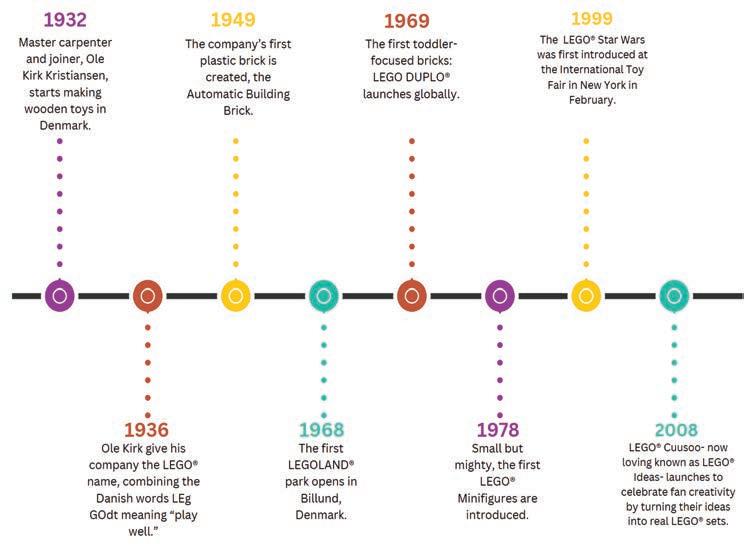
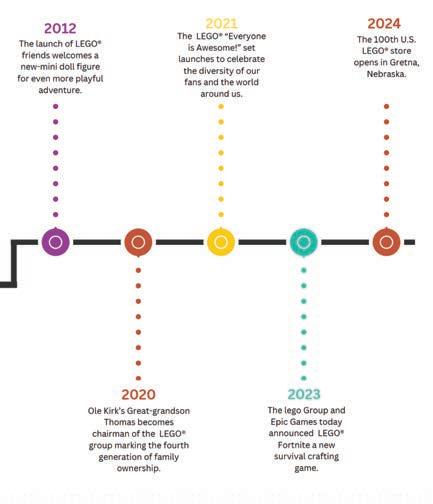
LYDIA HARLOW Staff Writer
heels spin faster as the hill steepens downwards. The hard work and pain of pedaling uphill is finally rewarded as the bike seems to fly off the ground, twigs and leaves snapping underneath the weight of the wheels.
Cycling is one of the most common forms of exercise in the United States. The League of American Bicyclists estimates that altogether American youth spend approximately 13,000,000 minutes biking each year. According to the Pew Research Center, over half of the United States population owns and rides bikes regularly.
Four years ago, senior Charlie Votrabek started MN’s own cycling club with the help of their sponsor, science teacher Jeff Machal. Although the cycling club is one of MN’s smallest clubs, they are still incredibly active both in and outside of school.
“[During our meetings,] we talk a lot about bikes. We set up rides to ride our bikes around and talk about bike maintenance as well… [we] go to Tranquility Park and ride those mountain bike trails,” Votrabek said.
volved, start learning about bikes, riding skills, and then if you want to be competitive there’s various events and races,” Machal said.
No matter the bikers’ level of experience, the cycling club welcomes all. The club helps every participant improve and progress, whether they have years of experience or none at all.
Although he had little prior experience, Votrabek started the club and now bikes regularly in races. In contrast, freshman Cora Moseley has been biking for many years. She is a legacy bicyclist, as her dad helped start the Nebraska Interscholastic Cycling Association (NICA) fifteen years ago. NICA is the organization that runs the races in which the cycling club participates.

Cora Moseley wraps her arm around Emma Stromp’s shoulder as they sit sideby-side on their bikes.The two friends have been biking around the neighborhood since childhood.
The team has monthly meetings at the school to discuss future races and events and other cycling-related topics. They also meet with similar clubs from the rest of the Millard schools at Tranquility Park during two-hour practices once or twice a week.
Photograph by Nathan Moseley
“It’s a great way for any student, male or female, from grades 6-12... [to] get involved with cycling. You don’t even have to have a bicycle. You can still get in-


“My dad invited me to come to this practice one time, and I did… I started biking in like seventh grade, and I’ve been on the [NICA] team ever since,” Moseley said.
Whether participants have had minimal or many years of experience, they can find an outstanding team to improve their skills with.
The Cycling Club also provides its athletes with one-of-a-kind opportunities to race against similar clubs from around the state. They travel around Nebraska and even to surrounding states for these races.
The races take place roughly every two weeks, and the length of the races depends on the team each cyclist is on, with middle school, freshmen, junior varsity, and varsity riding increasing numbers of laps.
Each cyclist can choose whether to focus on overall placement between teams or beating their personal
Who: Middle and high school student-athletes entering grades 6-12.
What: A youth development organization that uses mountain biking as a tool to promote growth and learning.

Where: They ride on local mountain bike trails.

When: The season runs from July through October, with five-weekend events scheduled each fall.
records.
“It’s a great way to basically race against yourself [and] race against the clock… You can be as competitive or noncompetitive as you’d like to be,” Machal said.
The focus on improvement and beating personal times helps to keep athletes motivated and positive throughout the season, as well as building a group focused on mutual self-improvement.
“It’s less about other people pushing you, it’s more about pushing yourself. You don’t have to race if you don’t want to,” Moseley said.
Since the community is so small and tight-knit, almost everyone knows each other. Opposing competitors often remember each other, since participants regularly race against the same people.
“[In] the biking community, there’s so few of us that all of us know each other, especially the girls. There’s maybe 30 or 40 of us [girls] total so we all cheer each other on,” Moseley said.
Even when competing for opposing teams, the mountain biking community is incredibly supportive and they work hard to build each other up in every part of the races.
Close friendships are often formed even between competitors from different schools, such as Moseley and one of her closest competitors, Westside athlete Emma Stromp.
“We’re really close time-wise, but before we start, we’ll give each other fist bumps and high fives and get a picture together, and then we’ll race. We’ll be encouraging each other on the trail, even though we’re competing for the medal,” Moseley said.
This level of support between opposing teams is incredibly rare in the athletic world. These bonds between competitors help create wonderful, healthy, and vibrant friendships between teams.
“I’ve always said this but… mountain bikers are some of the best people that you’ll ever meet because we’re such a close community. [We] all really support each other,” Moseley said.

Cora Mosely leans forward on her bike, racing down the path with determination. She’s been training to compete at the Maskentine race in Stanton, Nebraska for the past few months.
Caden VerMaas and Pierce Mooberry are set to join Nebraska football, fulfilling a shared dream
ARGYRENIA PIPINOS
Lifestyle Editor
The field is alive with energy as senior Caden VerMaas, the first defensive back, and running back, holds the football with determination. Beside him, senior linebacker and tight end Pierce Mooberry wiped the sweat from his brow, focused and ready. The Mustangs are up against the scout team. At this moment, Mooberry realizes it wasn’t just another game or practice; it was a milestone in their journey, a testament to their unwavering friendship and dedication. They had always dreamed of competing at the collegiate level, and now, that dream was unfolding right before their eyes.
Both players have established themselves as key athletes, each bringing unique strengths to the field. VerMaas stands out for his versatility, excelling as both a quarterback and a first safety, while Mooberry has made a name for himself as a formidable linebacker.
Their hard work has earned them scholarships and admiration from their peers and coaches. As they prepare for the next chapter in their football careers, they remain committed to pushing each other and leading their team to success.
“Caden and I have been dreaming about playing [college] football together since elementary school, and that dream became a reality when we both started receiving offers,” Mooberry said.
Their paths to this moment were different yet interconnected. VerMaas’s decision to commit to the University of Nebraska-Lincoln came after careful consideration of his options. He was drawn to the opportunity to play where he could continue to grow alongside familiar faces. He received his offer as a sophomore on
October 3, 2022, and knowing it was the right fit for his future, he accepted.
“I picked UNL because of Coach Rhule and the relationships I’ve built with the coaching staff. Plus, I wanted to be close to home so my family can watch me play,” VerMaas said.
For him, playing alongside athletes he had grown up with was essential. Many of them were players he had known for years, creating a sense of camaraderie that felt like home.
“I know a lot of people starting. I grew up with them, I played with and against them, and they have developed into amazing players I wish to become one day,” VerMaas said.
Mooberry, on the other hand, took a different route. The summer before his senior year, he explored several schools, visiting Kansas State University, Iowa State University, the University of Minnesota, and ultimately Nebraska. After careful consideration, he chose the school that offered the best resources for his growth as an athlete and an individual.
“I chose UNL because of the coaching staff and also just the resources they have. They’ve got everything I need, and I trust in the coaches to develop me,” Mooberry said.

Caden VerMaas poses with his family and UNL Head Football Coach Matt Rhule. Committing accomplished his lifelong dream of playing football for Nebraska.
into their leadership roles on the team.
“Since I’ve been here, I’ve seen the maturity in both of them. Pierce is a very mature kid; he steps into the leadership role when the team needs it.

Pierce-ing His Way To The Top Pierce Mooberry announces his commitment to UNL on social media. Moobery made this decision after visiting several school and considering various collegiate offers.
Photograph contributed by @MooberryPierce on X
Despite their different journeys taking a separate path, VerMaas and Mooberry’s bond had only grown stronger. Their shared history of playing together since childhood had led them to this point. Now, as teammates at MN, they’ve toiled and trained together, constantly pushing each other to improve. Their friendship is built on years of trust and dedication and reaching this level felt like a realization of their combined efforts.Head football coach Allen Burrell had witnessed their growth firsthand and appreciated their hard work on and off the field. He witnessed their physical skills improve and their growth as they stepped
Photograph contibuted by @ Caden_VerMaas on X
Caden has been more of an example of how to accomplish your personal goals, and it has reflected on our team,” Burrell said.
Burrell praises both their talent and their dedication to training, which he believes would lead to their future success.
“The hard work they put in not only during the season but the off-season, perfecting their craft, putting in that extra time and work is leading to the opportunities they’re going to have in the future,” Burrell said. Burrell recalled a pivotal moment in Mooberry’s development at the second game of the season at Cherry Creek.
“Pierce took that leap from being a top-level player to an elite-level player. In that game, he played against one of the top teams in the country, and he deployed a lot of great things on the field, like mental toughness, physical toughness, leadership, and accountability,” Burrell said.
Burrell emphasizes the importance of preparing the team for the demands of college sports on the field, in the weight room, and in the classroom. He knows that balancing academics and athletics at the college level requires discipline, which he’s been striving to model for the boys.
“You just try to get them used to the scheduling and the demands in college athletics because it’s basically a job, which is more than your average school day,” Burrell said.
With years of preparation behind them and Burrell’s unwavering support, VerMaas and Mooberry are taking a step forward in the next chapter of their lives at Memorial Stadium.
The MN Softball team breaks 15 school records in a remarkable season
GRACE
EVERT
Staff Writer
T
he 2024 season was not only successful for the MN softball team, it was record-breaking. Over the season, 22 athletes under head coach Travis Unzicker broke 15 records, consisting of 8 team records and 7 individual records.
“Many records stood out to me, but in particular, we had 359 hits this season compared to 313 that have stood since the ‘93 championship season,” Unzicker said.
Other team records broken include most runs scored in a season, most runs batted in (RBIs) in a season, best team batting average, most doubles in a season, most home runs in a season, best slugging percentage, and most wins in a season. The record for most wins in a season stood since 1993 when 30 wins were achieved. This season, the MN softball team won 31 games to narrowly beat the record. As for individual achievements, two athletes in particular made a huge impact.
“Macey Jarose and Abby Beard made the biggest jump into our lineup and provided a huge production increase,” Unzicker said.
Jarose, a junior, and Beard, a sophomore, have both been playing softball since they were toddlers.
“I have been playing softball for as long as I can remember. I started playing around age 5 and fell in love with the game. I’ve been at Millard North for three years now, and have been on Varsity all three years,” Jarose said.
batting average in a season, most hits in a season, most RBIs in a season, and best percentage on base.
“Breaking records is exciting because it gives me another challenge to keep working towards and to be better next season. As a team, we almost broke all the team records this season which is so insane,” Beard said.
These accomplishments were not by accident, as the team has been working hard on and off the field to ensure a successful season. Coaches have been training not only on physical performance but also on mentality and teamwork.
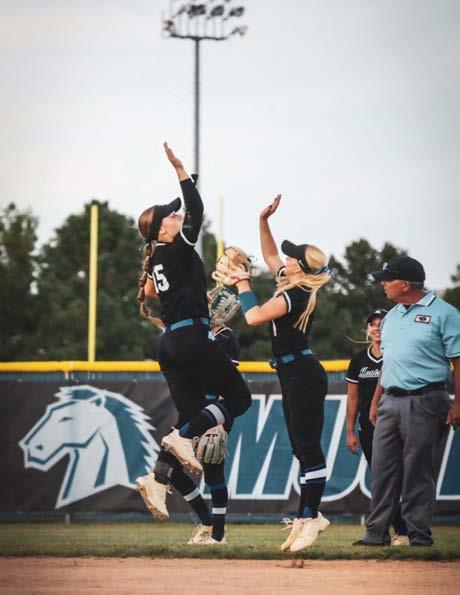
Junior Macey Jarose and Senior Carley Stych celebrate with a high-five. Jarose and Stych both contributed to one of the most successful seasons in the school’s history.
Photograph contributed by Macey Jarose
Jarose broke the individual record for the most stolen bases and runs in a season. She smashed the previous runs in a season record, raising the bar from 44 to 65 runs.
“It feels pretty surreal looking at all the records we broke because some haven’t been broken in a long time. It just goes to show that all our hard work has paid off and I’m so proud of everyone on this team!” Jarose said.
Beard broke four individual records including best
“Our coaches incorporated a program called the “W.A.N.T”, which stands for Weights, At Bats, Nutrition, and Teammate. This program was new, and I believe it helped everyone tremendously because everyone was confident in themselves and each other,” Jarose said.
After being runner-up in the state championship last year, the team set new goals with the determination to have the most successful season possible. They had been preparing since the end of the 2023 season.
“In winter and spring, the girls tracked their progress in each W.A.N.T category and read 3 books on how to be better team mates. We also increased our Mustang Mindset mental training through assistant coach Skyler Groebli,” said Unzicker.
This holistic approach was clearly instru mental in the demolition of long-standing MN softball records. Through setbacks and successes, the team was able to keep focus and attack the next challenge.
“Softball is such a fast-paced game where there’s no time to dwell on a mistake at bat. If we don’t give into the fear of failure we are more likely to play free and loose, and more importantly have fun,” said Jarose.
The team finished the season not only with 15 school records broken but also as District and Metro champions and as State Runner-ups.




“The last couple of weeks, we focused on enjoying the little things and the little moments. Doing that made things so much more enjoyable, especially during state and the constant games,” said Beard. Even as their season came to a close, the records broken will serve as a reminder of all the team accomplished this season.
Coaches modify 7th hour Weight Training class for athletes to maximize their time
KATELYN JUDD
Staff Writer
usic blares loudly in Millard North’s weight room as athletes, ranging from football, soccer, swim, and basketball programs, converse with their respective teams in 7th hour Weight Training.
Gym teachers and coaches decided earlier this year to modify 7th hour Weight Training class to be more specific and specialized towards athletes. Though they share the same name, the new 7th hour Weight Training is only for these athletes. With this class, athletes can get their necessary training during the school day to decrease the time they have to stay before or after school and get a P.E. credit in the process.
A typical day in Weight Training for sophomore three-sport athlete Alaina Hutchinson looks along these lines:
She arrives and looks on the app TeamBuildr Training on her phone to find out what her workout looks like for the day. Fluctuating between workouts like hang cleans, weightlifting, different sets, and cardio workouts, schedules and activities differing each day always keep athletes on their toes.
In previous years, athletes needed to stay hours after school due to demanding weight training and practice schedules. Waiting for other sports so teams could use the facilities also added to the time spent. Sophomore three-sport athlete in cross country, track, and basketball Alaina Hutchinson has seen benefits as to what this class has done to decrease wait times.
“With having pre-season and other sports [also training after school] it’s usually hard to get a field or get into the weight room. So by having a 7th hour where you can weightlift, kids can actually have free time at night [because we’re not staying at school so late],” Hutchinson said.
Staying late limits athletes’ abilities to join other
Talk
extracurricular activities, get a possible job, and can even put them behind in completing homework and getting a sufficient amount of sleep. This semester-long class can help students combat these fatigues.
Boys basketball coach and gym teacher Michael Etzelmiller noticed how overworked athletes were becoming after being required to stay until much later times, and decided something had to be done.
“This is the first year that we’ve done [the Weight Training class]. Getting people who are engaged in training and who want to come to class to improve their abilities and their athleticism [is our goal]. We want to gear this class towards benefiting the athlete and the individual themselves,” Etzelmiller said.
Hutchinson has seen an improvement in a multitude of ways, as this class has reached its overall goal of helping her athletically, as well as her as a student and a person.
“I’ve gotten stronger, which is helpful for basketball and shooting, and it definitely helps me mentally,” Hutchinson said. “It gave me time to get my homework done and I have time to relax [and] more time to myself.”

Swim coach and gym teacher Andrew Cunningham incentivized his swimmers to join 7th hour Weight Training, has seen how this class improves the team as a whole, and how apparent it is from the perspective of someone who doesn’t teach the class.
“I find it beneficial to have them be able to lift together and build rapport with each other. They motivate each other,” Cunningham said.
Junior Boys Basketball player Major Mosser is affected as an individual and a whole team in the process. By having the same 7th hour, he has more classes with his teammates earlier in the day as well.
“It’s super valuable that before school ends we can also get P.E. credits while we’re also coming together as a basketball team and getting better,” Mosser said.
The physical education curriculum cycles every two years, during which improvements take place and even new classes are implemented, like 7th hour Weight training for athletes this year. Coaches are already planning for the next cycle and have new ideas for classes.
Propelling Program
The TeamBuildr App shows a daily schedule. TeamBuildr has helped athletes stay on a workout schedule. Photograph contributed by Alaina Hutchsinson
Alleviating students’ stress levels isn’t the only way the class impacts athletes. This class also allows students to attain the necessary gym credits to graduate, while providing additional time for athletes to bond as a team.
What are you most excited for at State Cross Country?
Beckett Anderson

When the curriculum is revised district-wide in a few years, the goal is to have a sports performance class that includes more sport-specific exercises and workouts.
Whilst Weight Training is composed of athletes from across the board, providing a unique opportunity for athletes to train during the school day, it’s entirely possible that teams soon could have their own class and take team bonding to the next level.
Having the opportunity to run with everyone else from around the state and being one of the better runners.
Sophomore “ “

Ella Jonas Senior “ “
Honestly, just having a good last race and finishing. Because it’s my last year and because I made it to state, it’s just a good way to finish off my season and my year.
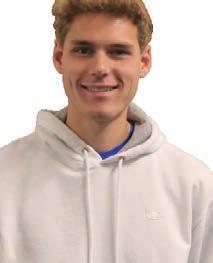
Mason Hutfles Senior “
I’m just looking forward to being able to show the younger guys on the team what it’s like to compete at such a high level.